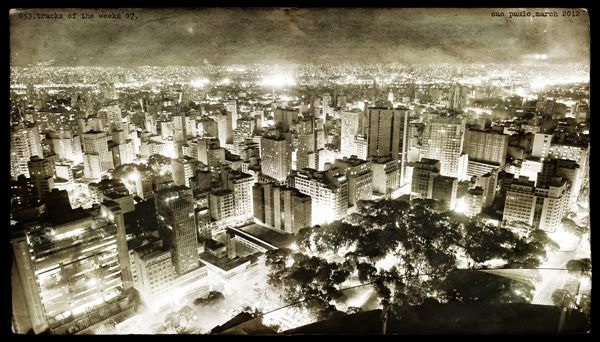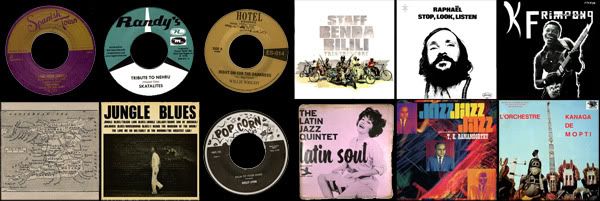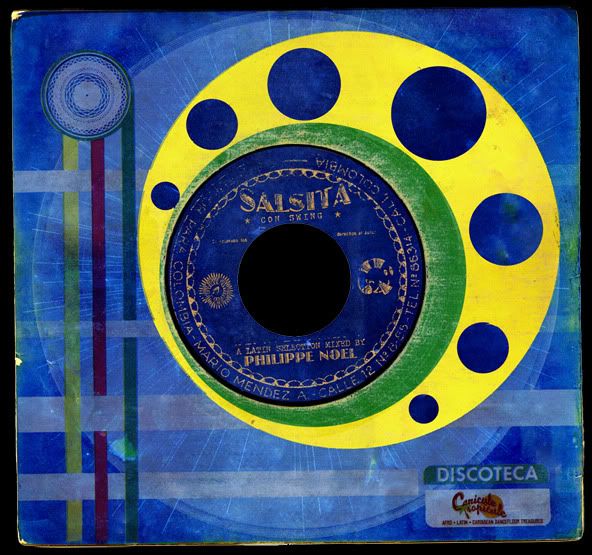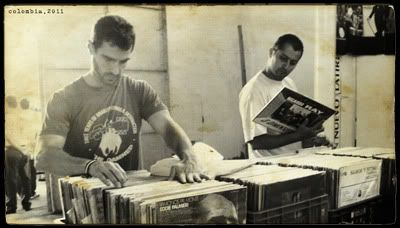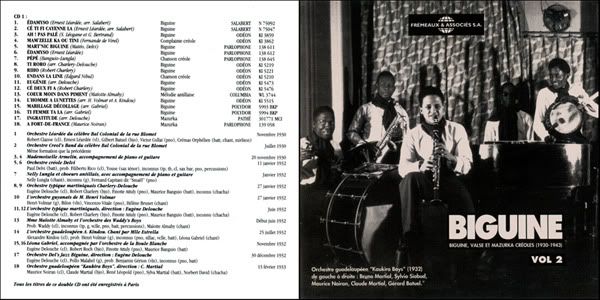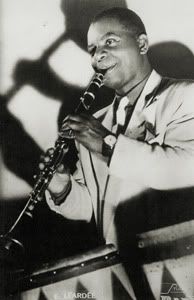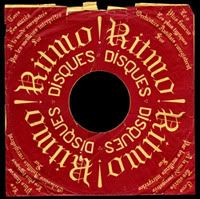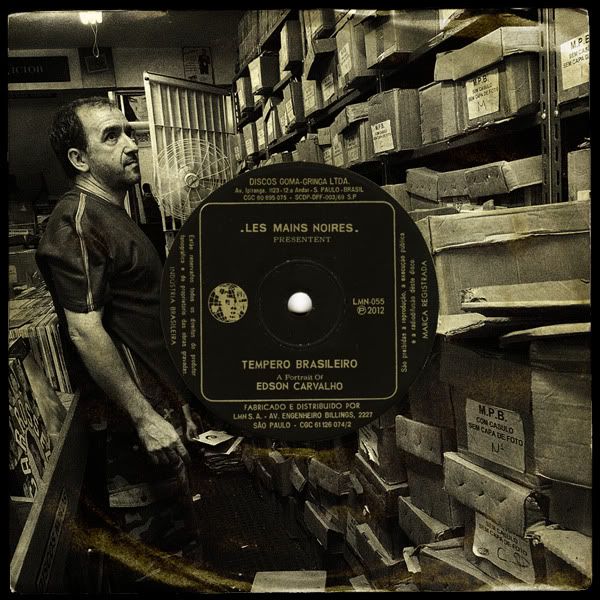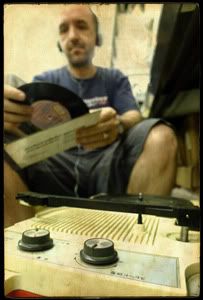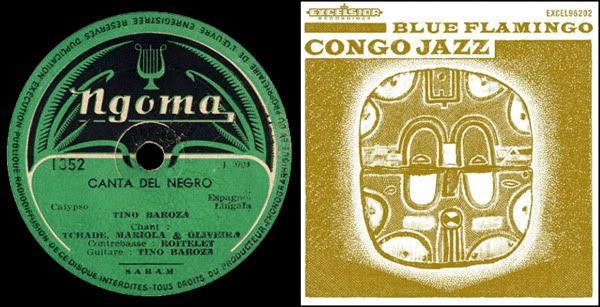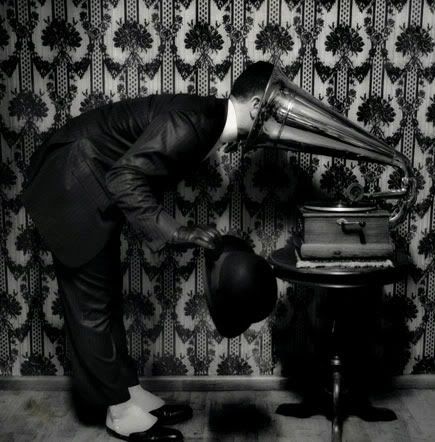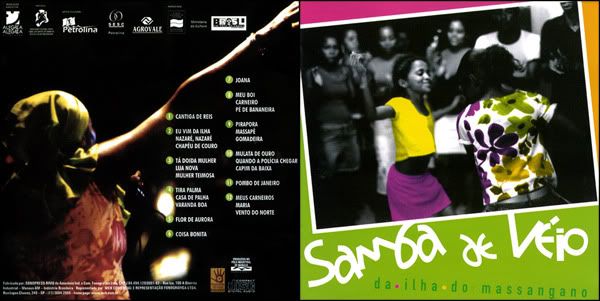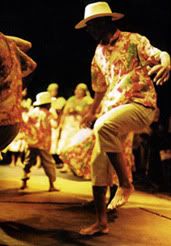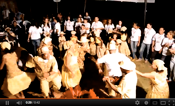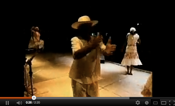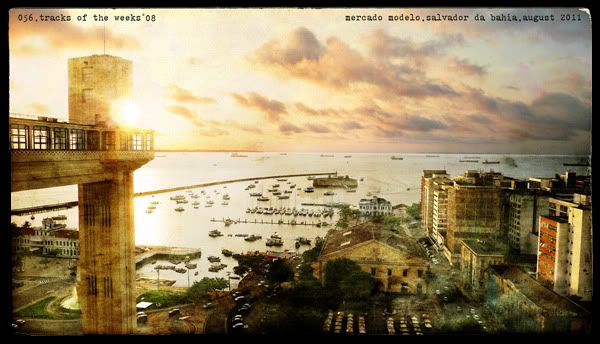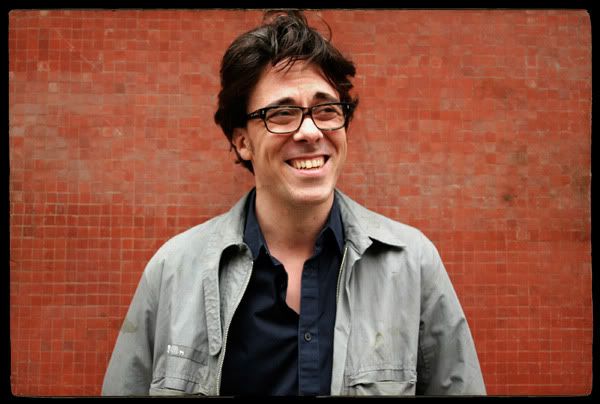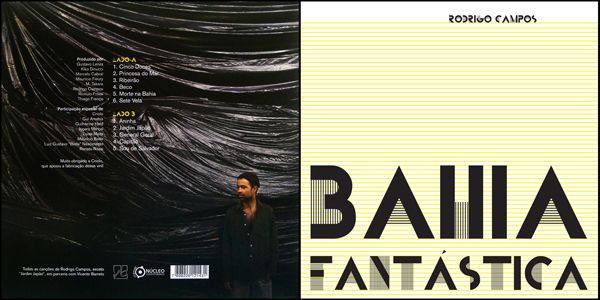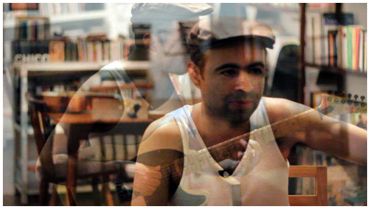here are some of the best discoveries from researches around North & North East Brasilian music.
Traditionnal rhythms Carimbó, Forro and Siria compose this selection especially elaborated for
the UK's leading Afro, Caribbean and Latin music party collectives, SOFRITO.
.download.
01° CAMARAO / Retrato de um Forro
02° CONJUNTO ELY FARIAS / Corrupaco
03° GRUPO CARIMBO / Minha paixao
04° MESTRE CUPIJO / Ventinho do norte
05° BANDINHA DO CAMARAO / Xeêm
06° ORLANDO PEREIRA / Carimbo para Yemanja
07° CAMARAO / E proibido cochilar
08° GRUPO DA PESADA / Voa andorinha
09° JOSÉ SILVA E SUAS BAIANAS - Cai sereno
10° ORLANDO PEREIRA / Maruda
11° NAMORADOS DO CARIMBO / Pretinho dengoso
12° CARIMBO DE ALGODOAL / Ê...do lado de lá
13° CONJUNTO O IRAPURU / Maria vamos a praia juntar ajuru
14° NAMORADOS DO CARIMBO / Bacurau
15° VEREQUETE E SEU CONJUNTO UIRAPURU / Xote paraense
16° SILUCA / Xendengo
17° ORLANDO PEREIRA / Carimambo
18° JANJAO / Meu barquinho
![Photobucket]()
Traditionnal rhythms Carimbó, Forro and Siria compose this selection especially elaborated for
the UK's leading Afro, Caribbean and Latin music party collectives, SOFRITO.
.download.
01° CAMARAO / Retrato de um Forro
02° CONJUNTO ELY FARIAS / Corrupaco
03° GRUPO CARIMBO / Minha paixao
04° MESTRE CUPIJO / Ventinho do norte
05° BANDINHA DO CAMARAO / Xeêm
06° ORLANDO PEREIRA / Carimbo para Yemanja
07° CAMARAO / E proibido cochilar
08° GRUPO DA PESADA / Voa andorinha
09° JOSÉ SILVA E SUAS BAIANAS - Cai sereno
10° ORLANDO PEREIRA / Maruda
11° NAMORADOS DO CARIMBO / Pretinho dengoso
12° CARIMBO DE ALGODOAL / Ê...do lado de lá
13° CONJUNTO O IRAPURU / Maria vamos a praia juntar ajuru
14° NAMORADOS DO CARIMBO / Bacurau
15° VEREQUETE E SEU CONJUNTO UIRAPURU / Xote paraense
16° SILUCA / Xendengo
17° ORLANDO PEREIRA / Carimambo
18° JANJAO / Meu barquinho

I'd like to thank especially Alfredo Bello wich has been a strong reference while those researches.
.BRIEF HISTORY OF CARIMBÓ.
More than a musical style of Pará, the Carimbó is one of the most representative manifestations of the Amazonian culture. According to some researchers, the contributions of Indian and African culture in Pará formed the roots of the rhythm, which already have more than 200 years of history.
This extraordinary artistic creativity of the people of Pará was created by the Tupinambá indians who, according to historians, were gifted of an unusual artistic sense, leading them to be regarded, in the tribes, as true demigod.
Initially, according to all appearances, the dance Carimbó was presented in a monotonous way, like the great majority of Indian dances. When the African slaves made contact with this artistic manifestation of Tupinambá, they started to improve it, transforming this monotony to vibrations close from African batuque.
![Photobucket]() The Carimbó was and is still played nowadays with the drum lying on the floor and the musician sitting on it for hands drumming. In 1767, the jesuit Frei João Daniel wrote about the rhythm sung and danced by the Indians Tupinambás, from a drum made of hollow wood covered with animal skin: the curimbó, which led to the current name of the music and dance.
The Carimbó was and is still played nowadays with the drum lying on the floor and the musician sitting on it for hands drumming. In 1767, the jesuit Frei João Daniel wrote about the rhythm sung and danced by the Indians Tupinambás, from a drum made of hollow wood covered with animal skin: the curimbó, which led to the current name of the music and dance.
Check out this video and sound recording of traditionnal Carimbó,
shooted by Alfredo Bello, founder of the label Mundo Melhor.
.Mestre Montano na Ilha de Maiaundeuã em Maracanã.
©SeloMundoMelhor
![Photobucket]() AugustoGomesRodrigues, better known as Verequete is a singer andcomposer ofCarimbó. His story is much likethe story ofmany menfrom the interior ofParáwho left everything behind them, leavingtheir placesof originto try toachieve improvementsof lifein the state capital.The difference with Verequete is that in his "diaspora", he brought with him various elementsof his original culture and reworkedinto a new context, anurban context, buildingacultural identity which comes from a long time ago.
AugustoGomesRodrigues, better known as Verequete is a singer andcomposer ofCarimbó. His story is much likethe story ofmany menfrom the interior ofParáwho left everything behind them, leavingtheir placesof originto try toachieve improvementsof lifein the state capital.The difference with Verequete is that in his "diaspora", he brought with him various elementsof his original culture and reworkedinto a new context, anurban context, buildingacultural identity which comes from a long time ago.
![Photobucket]() Verequete's carimbó, namedin honor ofToya Verequete, well-known figurein the terraces of the blackminein the suburbsof Belém, has the mark ofauthenticity, using traditionnalinstrumentsand respect theblack roots ofcarimbó.
Verequete's carimbó, namedin honor ofToya Verequete, well-known figurein the terraces of the blackminein the suburbsof Belém, has the mark ofauthenticity, using traditionnalinstrumentsand respect theblack roots ofcarimbó.
In 2000, Luiz Arnaldo Campos and Rogério Parreira realised "Chama Verequete",
*********************************
More than a musical style of Pará, the Carimbó is one of the most representative manifestations of the Amazonian culture. According to some researchers, the contributions of Indian and African culture in Pará formed the roots of the rhythm, which already have more than 200 years of history.
This extraordinary artistic creativity of the people of Pará was created by the Tupinambá indians who, according to historians, were gifted of an unusual artistic sense, leading them to be regarded, in the tribes, as true demigod.
Initially, according to all appearances, the dance Carimbó was presented in a monotonous way, like the great majority of Indian dances. When the African slaves made contact with this artistic manifestation of Tupinambá, they started to improve it, transforming this monotony to vibrations close from African batuque.
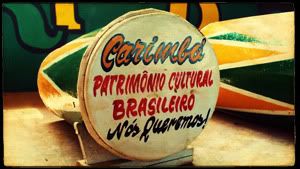 The Carimbó was and is still played nowadays with the drum lying on the floor and the musician sitting on it for hands drumming. In 1767, the jesuit Frei João Daniel wrote about the rhythm sung and danced by the Indians Tupinambás, from a drum made of hollow wood covered with animal skin: the curimbó, which led to the current name of the music and dance.
The Carimbó was and is still played nowadays with the drum lying on the floor and the musician sitting on it for hands drumming. In 1767, the jesuit Frei João Daniel wrote about the rhythm sung and danced by the Indians Tupinambás, from a drum made of hollow wood covered with animal skin: the curimbó, which led to the current name of the music and dance.Check out this video and sound recording of traditionnal Carimbó,
shooted by Alfredo Bello, founder of the label Mundo Melhor.
.Mestre Montano na Ilha de Maiaundeuã em Maracanã.
©SeloMundoMelhor
*********************************
.MESTRE VEREQUETE.
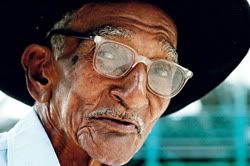 AugustoGomesRodrigues, better known as Verequete is a singer andcomposer ofCarimbó. His story is much likethe story ofmany menfrom the interior ofParáwho left everything behind them, leavingtheir placesof originto try toachieve improvementsof lifein the state capital.The difference with Verequete is that in his "diaspora", he brought with him various elementsof his original culture and reworkedinto a new context, anurban context, buildingacultural identity which comes from a long time ago.
AugustoGomesRodrigues, better known as Verequete is a singer andcomposer ofCarimbó. His story is much likethe story ofmany menfrom the interior ofParáwho left everything behind them, leavingtheir placesof originto try toachieve improvementsof lifein the state capital.The difference with Verequete is that in his "diaspora", he brought with him various elementsof his original culture and reworkedinto a new context, anurban context, buildingacultural identity which comes from a long time ago. 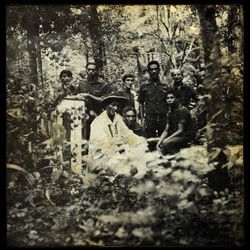 Verequete's carimbó, namedin honor ofToya Verequete, well-known figurein the terraces of the blackminein the suburbsof Belém, has the mark ofauthenticity, using traditionnalinstrumentsand respect theblack roots ofcarimbó.
Verequete's carimbó, namedin honor ofToya Verequete, well-known figurein the terraces of the blackminein the suburbsof Belém, has the mark ofauthenticity, using traditionnalinstrumentsand respect theblack roots ofcarimbó.When the rhythmof Parábegan to awakeinterest in themassmedia, record companies from the south of the countrylaunchedeightLP'sabout Verequete's authenticcarimbó.
Verequetewasanearly popularizerofcarimbóin the suburbsof Belém with his band O Uirapuru.
In 2000, Luiz Arnaldo Campos and Rogério Parreira realised "Chama Verequete",
a 18min documentary about Verequete. Don't miss a chance to watch it !
.PART°01.
.PART°02.
*********************************
.CAMARAO.
![Photobucket]() Hehas learned fromhis father, the accordionistAntonioNeto, who alwaystook him topartieswhere he played. In his workon Rádio Difusora de Caruaru, Camarãocouldhave contact withthe great namesofnational music, as Sivucaand Hermeto Pascoal.Later, he improvehis technique withoneof the greatestNortheastern music icons,LuizGonzaga, with whom herecorded the songGaroto do Grotãoin 1978. The kingof theballadhas also been the producer of the first two albums of Banda do Camarão,the first forró's band of Brazil.
Hehas learned fromhis father, the accordionistAntonioNeto, who alwaystook him topartieswhere he played. In his workon Rádio Difusora de Caruaru, Camarãocouldhave contact withthe great namesofnational music, as Sivucaand Hermeto Pascoal.Later, he improvehis technique withoneof the greatestNortheastern music icons,LuizGonzaga, with whom herecorded the songGaroto do Grotãoin 1978. The kingof theballadhas also been the producer of the first two albums of Banda do Camarão,the first forró's band of Brazil.
.CAMARAO.
Bornon the 23th of June 1940,in Brejo da Madre de Deus, Pernambuco, the accordionistReginaldoFerreiraAlvesbecame known asCamarãoafterthe singerJacintoSilvamentionned hisredcheeksduring aradioshow.Masterof the instrument, he counts a more than50 years careerdedicated toXote, Xaxado, Forró and Baião.
 Hehas learned fromhis father, the accordionistAntonioNeto, who alwaystook him topartieswhere he played. In his workon Rádio Difusora de Caruaru, Camarãocouldhave contact withthe great namesofnational music, as Sivucaand Hermeto Pascoal.Later, he improvehis technique withoneof the greatestNortheastern music icons,LuizGonzaga, with whom herecorded the songGaroto do Grotãoin 1978. The kingof theballadhas also been the producer of the first two albums of Banda do Camarão,the first forró's band of Brazil.
Hehas learned fromhis father, the accordionistAntonioNeto, who alwaystook him topartieswhere he played. In his workon Rádio Difusora de Caruaru, Camarãocouldhave contact withthe great namesofnational music, as Sivucaand Hermeto Pascoal.Later, he improvehis technique withoneof the greatestNortheastern music icons,LuizGonzaga, with whom herecorded the songGaroto do Grotãoin 1978. The kingof theballadhas also been the producer of the first two albums of Banda do Camarão,the first forró's band of Brazil.Camarão is 'Living Patrimony of Pernambuco', a title grantedby the Government ofPernambucosince 2002.
I strongly invite you to have a look to the documentary 'O Milagre de Santa Luzia, uma viagem pelo Brasil que toca sanfona' realized in 2009 by Sergio Roizenblit, and who feature Camarão. Check the trailer:
I strongly invite you to have a look to the documentary 'O Milagre de Santa Luzia, uma viagem pelo Brasil que toca sanfona' realized in 2009 by Sergio Roizenblit, and who feature Camarão. Check the trailer:










